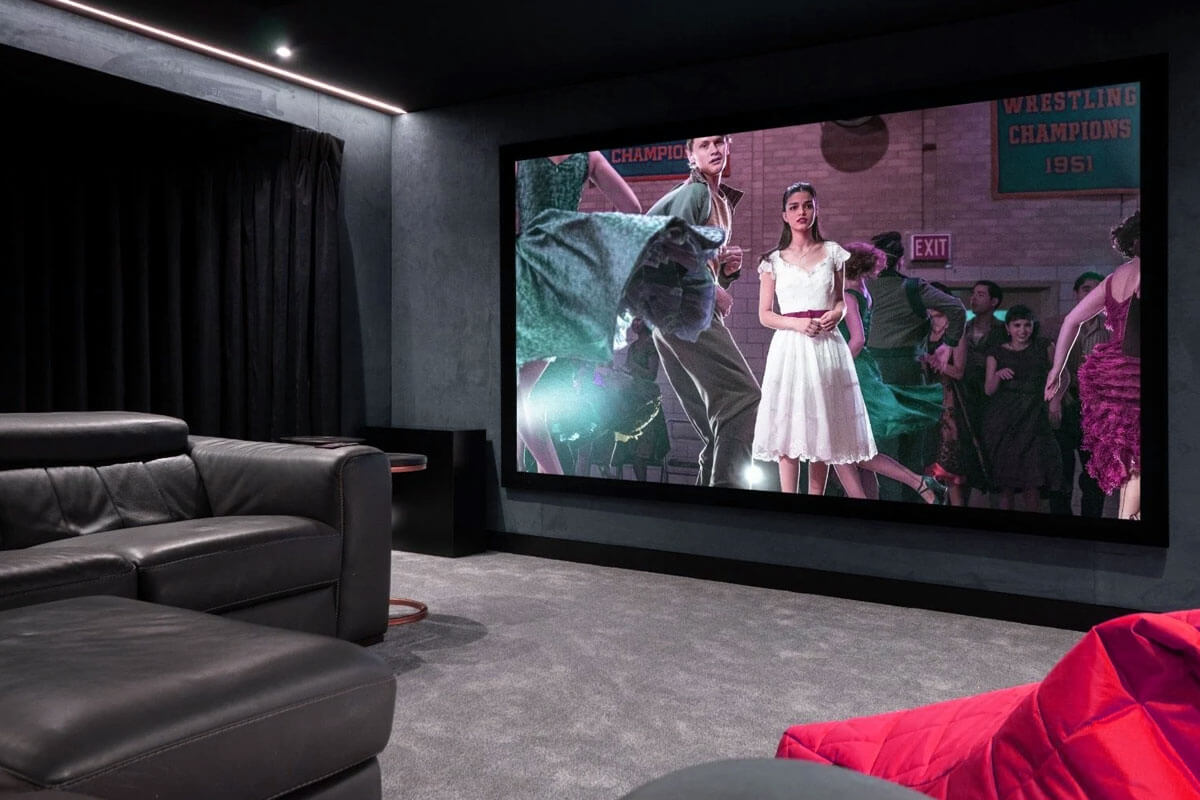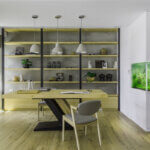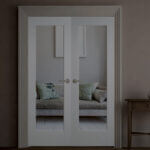Creating the perfect home theater setup means balancing room design, audio quality, display technology, and comfort. You need the right screen size for your space, properly placed speakers for immersive sound, controlled lighting, and comfortable seating. The best setups work with your room’s layout and budget while delivering cinematic experiences at home.
- Choosing the Room: Layout, Size, and Acoustic Environment
- Audio System Essentials: Speaker Types, Placement, and Calibration
- Display & Video Setup: Screen Size, Projectors vs TVs, Resolution & Lighting
- Seating, Sightlines, and Viewer Comfort
- Wiring, Connectivity, and Smart Controls
- Budget Tiers and Trade-Offs: Entry, Mid-Range, Premium
Choosing the Room: Layout, Size, and Acoustic Environment
Your room choice makes or breaks your home cinema experience. Rectangular rooms work best, with the ideal ratio being 1.6 times longer than they are wide.
Acoustic considerations matter more than you might think. Hard surfaces like tile or hardwood floors create sound reflections that muddy dialogue. Carpet, curtains, and upholstered furniture help absorb sound and reduce echo. If your room has lots of windows, heavy curtains control both ambient light control and sound reflections.
Basement rooms often work well because they’re naturally isolated from household noise and provide the dark, quiet environment that enhances the viewing experience. However, any room can work if you control the key factors. Avoid square rooms if possible, as they create standing wave problems that make bass sound uneven. If you’re stuck with a square room, audio-visual arrangement through furniture placement and acoustic treatment panels can help minimize these issues.
Temperature control is crucial too. Electronics generate heat, and a stuffy room ruins the viewing experience. Make sure your chosen space has adequate ventilation or air conditioning to maintain comfort during long movie sessions.
Audio System Essentials: Speaker Types, Placement, and Calibration
Your surround sound system is the heart of any great entertainment system. Start with a 5.1 setup: front left and right speakers, a center channel, two rear speakers, and a subwoofer.
The center channel handles dialogue, so place it directly above or below your screen at ear level when seated. Front speakers should form an equilateral triangle with your main seating position. Surround speakers go to the sides or slightly behind your seating, not directly behind like many people think.
Dolby Atmos takes things further by adding height channels that bounce sound off your ceiling. The newest technology is Dolby Atmos FlexConnect, which automatically tunes wireless speakers for immersive sound anywhere in your room. TCL’s new Z100 speaker system uses this technology, letting you place speakers virtually anywhere while the system handles calibration automatically.
Audio calibration ensures your speakers work together properly. Many modern receivers include automatic room correction that uses a microphone to measure your room’s acoustics and adjust speaker levels accordingly. This calibration process measures the properties of your room and adjusts the sound of your system accordingly. Run this calibration from your main seating position for the best results.
Don’t forget about room acoustics treatments. Adding area rugs, wall hangings, and soft furnishings naturally improves sound quality by reducing harsh reflections. For reference-grade performance, consider acoustically transparent screen materials that allow front speakers to be placed behind the display.
Immersive Audio Formats
Modern theater configurations benefit from advanced audio formats beyond basic surround sound. Dolby Atmos creates three-dimensional soundscapes by adding overhead channels. DTS:X provides similar benefits with object-based audio that moves sounds precisely around your listening space. These formats transform your media room into a truly immersive entertainment environment.
Display & Video Setup: Screen Size, Projectors vs TVs, Resolution & Lighting
Screen size depends on your seating distance and room layout. For optimal viewing, use the THX formula: divide your screen diagonal by 0.84 to find the ideal distance, or sit 1.5 to 2.5 times the diagonal screen size away. A 65-inch TV works well for seating 8-10 feet away.
In 2025, Mini-LED technology offers OLED-like contrast with higher brightness, making displays like the TCL QM8K ideal for rooms with ambient light. OLED remains the gold standard for dark room viewing with perfect blacks and excellent color accuracy.
8K displays are available but offer limited benefits unless you have a massive screen. Most benefits come from AI upscaling that improves 4K content quality rather than true 8K content. Focus your budget on display quality and size rather than 8K resolution for most setups.
HDMI 2.1 connectivity is essential for modern displays. It supports 4K at 120Hz refresh rates, variable refresh rate for gaming, and enhanced audio return channel (eARC) for high-quality sound formats like Dolby Atmos. HDMI 2.2 was announced in 2025 with 96Gbps bandwidth, but won’t appear in consumer products for several years.
Ambient light control dramatically improves picture quality. Blackout curtains eliminate window glare during daytime viewing. Paint walls dark colors to reduce light reflection. Even small amounts of light bouncing off white walls can wash out dark scenes and reduce contrast.
Optimizing for Lighting and Contrast
Room lighting affects your display choice. QLED and Mini-LED displays work better in bright rooms because they achieve higher peak brightness. OLED excels in dark, controlled environments where its perfect blacks create stunning contrast.
Consider bias lighting behind your display. A strip of LED lights mounted behind the screen reduces eye strain and can actually make dark scenes appear darker by providing a reference point for your eyes. This optimal cinema setup technique originated in professional editing suites.
Seating, Sightlines, and Viewer Comfort
Seating layout affects everyone’s viewing experience. Your main seating should face the screen directly, with the center of the screen at eye level when seated.
For multiple rows, ensure each row can see over the heads of people in front. Theater seating with built-in cup holders and reclining mechanisms maximizes comfort for long viewing sessions. If you’re building custom seating, riser height of 6-12 inches per row usually works well.
Viewing distance varies by content type. Calculate your range using screen width: minimum distance equals 2x the screen width, maximum distance equals 5x the screen width. Having adjustable or multiple seating options accommodates different preferences.
Consider the room’s traffic flow. People shouldn’t need to walk in front of the screen to reach the bathroom or kitchen. Side aisles work better than center aisles for maintaining the viewing experience. This attention to speaker placement and traffic patterns separates professional installations from inadequate audio-visual systems.
Wiring, Connectivity, and Smart Controls
Modern home entertainment centers need robust connectivity. HDMI eARC connects your display to your AV receiver with a single cable, supporting uncompressed audio formats and simplifying setup.
Plan for multiple HDMI inputs at your display and receiver. Gaming consoles, streaming devices, cable boxes, and Blu-ray players all need connections. HDMI 2.1 inputs future-proof your setup for the latest gaming features and high-refresh content.
Wireless connectivity reduces cable runs but isn’t perfect for all applications. Systems like Dolby Atmos FlexConnect work well for surround speakers, automatically handling wireless synchronization and calibration. However, your main display connection should remain wired for the most reliable performance.
Smart home integration adds convenience through home automation. Program your lights to dim automatically when starting a movie. Voice control through Alexa or Google Assistant lets you adjust volume or switch inputs without finding the remote.
Universal remote controls or smartphone apps centralize control of all your devices. Modern AV receivers often include setup apps that guide you through configuration and provide ongoing control options.
Budget Tiers and Trade-Offs: Entry, Mid-Range, Premium
Entry-level setups ($1,500-$3,000) focus on the essentials. A 55-65 inch 4K TV with HDR support, a 5.1 speaker system, and a basic AV receiver deliver solid home theater experiences. TVs like the TCL QM8K start at $1,499 for the 65-inch model, offering Mini-LED technology at competitive prices.
Mid-range systems ($3,000-$8,000) add Dolby Atmos, larger displays, and better audio components. This tier includes room correction, multiple subwoofers, and premium display technologies like QLED or entry-level OLED.
Premium setups ($8,000+) deliver reference-quality experiences. High-end displays like Samsung’s Neo QLED 8K models offer cutting-edge processing and perfect room adaptability. Professional acoustic treatment, separates components, and calibration services ensure optimal performance.
The biggest performance gains come from display quality and room acoustics rather than expensive electronics. Invest in the largest, highest-quality display your budget and room allow, then build your audio system around it.
Smart shopping helps stretch budgets. Buy displays during major sales events when prices drop significantly. Speaker configuration can start simple and expand over time as your budget allows. Unlike the poor theater setups that result from impulse purchases, thoughtful planning creates lasting satisfaction.
Bottom Line: The perfect home theater setup balances your room’s constraints, viewing habits, and budget. Focus on screen size, surround sound placement, lighting control, and comfortable seating. Modern technologies like Dolby Atmos FlexConnect and HDMI 2.1 offer flexibility and future-proofing, while Mini-LED and OLED displays deliver stunning picture quality. Start with the essentials and upgrade components over time to build your ideal home theater experience.
Key Points to Remember:
- Viewing distance should be 1.5 to 2.5 times your screen diagonal for optimal immersion
- Speaker placement and room treatment matter more than expensive equipment for good sound
- Room lighting control dramatically improves picture quality regardless of display type
- HDMI 2.1 connectivity future-proofs your setup for gaming and audio features
- Budget allocation should prioritize display size and quality over unnecessary premium features
*Pricing update: Recent verification shows the TCL QM8K 65″ model retails for $1,499.99, correcting earlier estimates of sub-$1,300 pricing.





